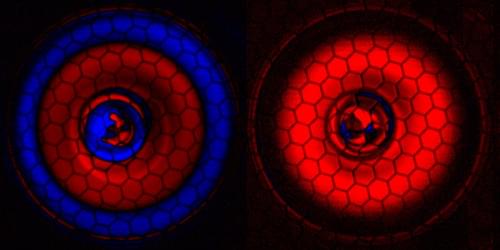A recently discovered acoustic effect allows a hot gas to simulate the gravity-induced convection within a star or giant planet.
Sometimes a light bulb goes on—literally—and a scientific advance is made. Researchers studying an acoustic effect in high-powered light bulbs have developed a system that mimics the gravitational field around planets and stars [1]. The team demonstrated that sound waves in the bulb generate a force that pulls gas toward the bulb’s center. This gravity-like force causes the gas to move around in convection cycles that resemble fluid flows in the Sun and in giant planets. With further improvements, the system could be used to investigate convection behavior that is too difficult to simulate with computers.
In 2017, research on high-powered sulfur lamps revealed that sound waves could drive hot gas to ball up in the center of the bulbs [2]. The surprising phenomenon caught the attention of Seth Putterman’s acoustic group at the University of California, Los Angeles. The team studied the clumping and showed that it could be explained by the acoustic radiation force. This force is well known in acoustic levitation experiments, in which sound waves scattering off an object, such as a small bead, can exert a force (see Synopsis: Tossing and Turning). Putterman and his colleagues showed that, in the bulbs, this force acts not at the surface of an object where sound scatters, but throughout the gas, where density variations redirect the sound waves. “We knew that the force acts at a sharp interface between something solid and a gas,” says team member John Koulakis. “In the bulb, there’s no sharp interface—just variations—but there still is a force.”
